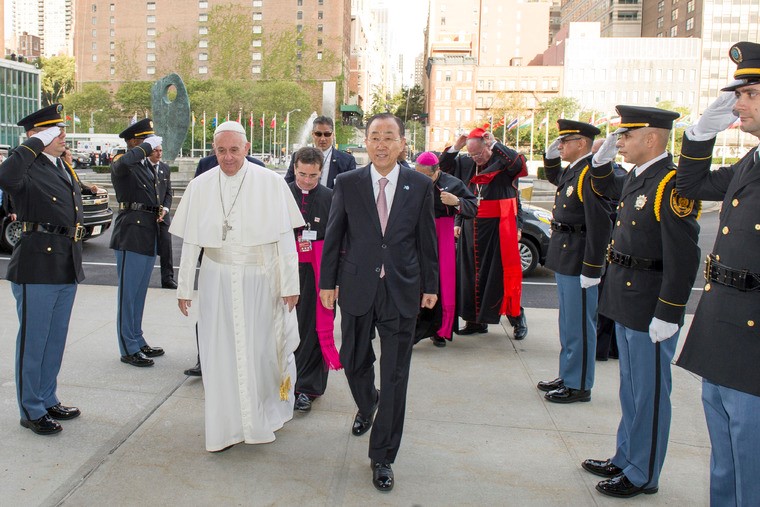
By Paul Rogers
The French-led military intervention in Mali both accelerates the war in the west African country and transforms its character. The prospect is of a long-term engagement that Islamist forces far beyond the region will see as an historic opportunity
Decision
The decision of France’s government to intervene directly in Mali on 12 January 2013 represents a sudden intensification of a complex conflict. After months of uncertainty and varying fortunes among the combatants, this new phase of the war will have far-reaching consequences that could extend way beyond Mali’s borders. The reported [14] “understanding and support” of the French action from the United Nations Security Council on 14 January is one such; but the impact on individual western states now bound [15] into a further military campaign in the Islamic world is also already apparent.
It is noteworthy, for example that even as it committed forces to operate in the country [16], France increased domestic-security measures amid warnings from the president [17], Francoise Hollande, about possible retaliatory [18] attacks. Britain, for its part, is supporting the French operation and has made available military-transport aircraft; a C-17 has already delivered [19] supplies to the government-controlled southwest of Mali where French forces are based. It is probable that David Cameron’s government will issue a similar security alert. The reported commitment of both United States and British special forces to the French-led effort reflects the degree [20] of mobilisation underway.
The situation in Mali has been deteriorating since Islamist elements took over the north of the country in early 2012, in the wake of an abortive military coup in the capital, Bamako (see Gilles Olakounlé Yabi, “Mali’s crisis: pitfalls and pathways [21]”, 18 April 2012). Several columns [1] in this series have tracked the variable course of the northern conflict and the stuttering efforts of the troubled Malian government, its west African allies, and states beyond the region to find an appropriate response (see “Mali: war, Islamism, and intervention [22]” [6 July 2012]; “Syria, Mali, Nigeria: war’s paralysis [23]” 11 October 2012]; “Mali, and the next war [24]” [1 November 2012]; and “Mali, preparing for war [25]” [15 November 2012]).
A central theme explored in these assessments been the connection of the Malian conflict to the wider evolution of the al-Qaida idea (see “Al-Qaida, idea in motion [26]”, 4 January 2013). Now, with France’s military intervention, that aspect may become even more integral to the unfolding of events on the ground.
The logic of intervention
The sheer abruptness of the French involvement [27] has taken many observers by surprise. True, towards the end of 2012 there was ample evidence [28] that an attempt to retake northern Mali from the Islamist paramilitaries was being contemplated. But it was assumed that two requirements – the need to train and equip troops from west African states, and the process of involving western troops (from Nato countries) to support them – would extend the timetable for intervention over many months. Indeed, United Nations sources indicated that the earliest date for any action [29] would be September 2013.
A key element in this judgment was the position of the military forces expected [30] to take the leading role in any campaign [31] in Mali. In the case of Nigeria, whose forces would compose the largest single contingent, the problem was twofold: the limited capability of the Nigerian army for the task ahead, and the fact that this army was already preoccupied with attempting to subdue the Boko Haram insurgency in Nigeria’s [32] own north. Similarly, the units that the Economic Community of West African States (Ecowas [33]) could assemble were equally judged far from being able to take over and hold northern Mali. It was widely assumed that the training of these regional forces would be a precondition of active western involvement, hence the longer anticipated timescale.
In the event, the dramatic change in the nature of the conflict was precipitated from the other side: the ability of Ansar Dine [34] and other Islamist paramilitaries, having consolidated their control of northern Mali, but to begin to advance [35] towards Mali’s southwest and occupy centres of population of strategic value that would take them nearer to the capital.
The heart of this acceleration was a rapid move towards [36] (and, on 11 January, occupation of) Konna, a town sixty kilometres northeast of Mopti. The latter has a substantial airfield, adjacent to nearby Sevare, and is the last town with a significant Malian army presence before the richer lands towards Bamako.
Konna and Mopti are on or near Route N16, the main north-south road. It was the entry into Konna that led the French military to intervene, in two ways.The first was to use strike-aircraft operating out of a base in Chad to attack [37] rebel forces in and around the town, and deploy helicopter-gunships to attack rebel columns on the route. The second was to fly in at least 400 members of special forces, mainly to start protecting Bamako itself.
The core purpose of France’s intervention at this early stage is thus twofold: to secure Mopti and Sevare, and to begin the process of strengthening Bamako’s security. Its airstrikes against rebel training-camps and supply-bases across northern Mali is a stark indicator of how quickly the conflict is escalating.The seizure [38] by counter-attacking Islamist forces on 14 January of the town of Diabaly, 400 kilometres from Bamako, further demonstrates how hard even these limited aims will be (not least as these forces entered [39] from a new front in Mauritania to the west).
The intial reports from Konna include details of civilian casualties, such as three children drowned while trying to cross a river to escape the bombing (see “African troops head to Mali as battle for north rages; 11 civilians dead [40]”, Washington Post/AP, 13 January 2013). In a situation where the United States has offered the use of drones to support the operation, this may be a signal of what is to follow in the coming months (see Bill Roggio, “French troops intervene in Mali [41]”, Long War Journal, 12 January 2013).
So far, however, the lack of regional or western ground troops means that the anti-insurgency campaign [42] will need far greater strength before it can attempt to push back the Islamist forces towards Mali’s north. It is reported that Niger and Burkina Faso are moving 500 troops each to Mali, and that Nigeria may follow soon with its own contingent; but western (especially French) soldiers are essential [43] to any major effort to dislodge the Islamist groups. If and when that effort gets underway, an already substantial western military intervention in yet another Islamic country (after Afghanistan, Iraq, and Libya) could by degrees turn into a war that stretching throughout 2013.
The transnational lens
It is possible that a combined Ecowas/Nato force can occupy and secure northern Mali on behalf of the country’s weak [44] government. But this in turn would have two major implications. The first is that to garrison this large territory in the long term will be deeply problematic, and require west African troops [45] supported by Nato states to be involved for an extended period (and present themselves as attractive targets along the way).
The second is that a swathe of Islamist movements across north Africa, the middle east and south Asia would find in Mali a new focus for their activity [46] and ambitions. This emphasises the reality that a loosely connected movement is now much more [47] of a potent idea. It is an idea that – as the previous column in this series [1] argued – can percolate through to paramilitary and other groups – from the Maghreb, Somalia and Yemen to Syria, Iraq, and even the north Caucasus [48] (see Al-Qaida, idea in motion [26]”, 4 January 2013).
In this light, any direct long-term western involvement in Mali will be a gift to jihadi propagandists, who will utilise [49] all available forms of social media to press their case that the west is perpetrating yet another cruel attack on Islam. The narrative will be reinforced by the inevitable, gruesome images and videos of killed and maimed civilians, and destroyed and damaged homes.
France and other Nato states see [50] the Islamist takeover of northern Mali as a direct threat to the regional security west and north Africa, which must be halted [51] by overwhelming military force. But if this appears to them the only option, it is vital to understand that their adversaries see in it a historic opportunity: the possible start of a costly war that reverberates far beyond Mali. The precedents of Iraq and Afghanistan are an ominous warning of what could lie ahead.
The AfricaPaper: Many thanks to Paul Rogers for this report.
About Paul Rogers
Paul Rogers is professor in the department of peace studies at Bradford University, northern England. He is openDemocracy’s international-security editor, and has been writing a weekly column on global security since 28 September 2001; he also writes a monthly briefing for the Oxford Research Group. His books include Why We’re Losing the War on Terror (Polity, 2007), and Losing Control: Global Security in the 21st Century (Pluto Press, 3rd edition, 2010). He is on twitter at: @ProfPRogers









































